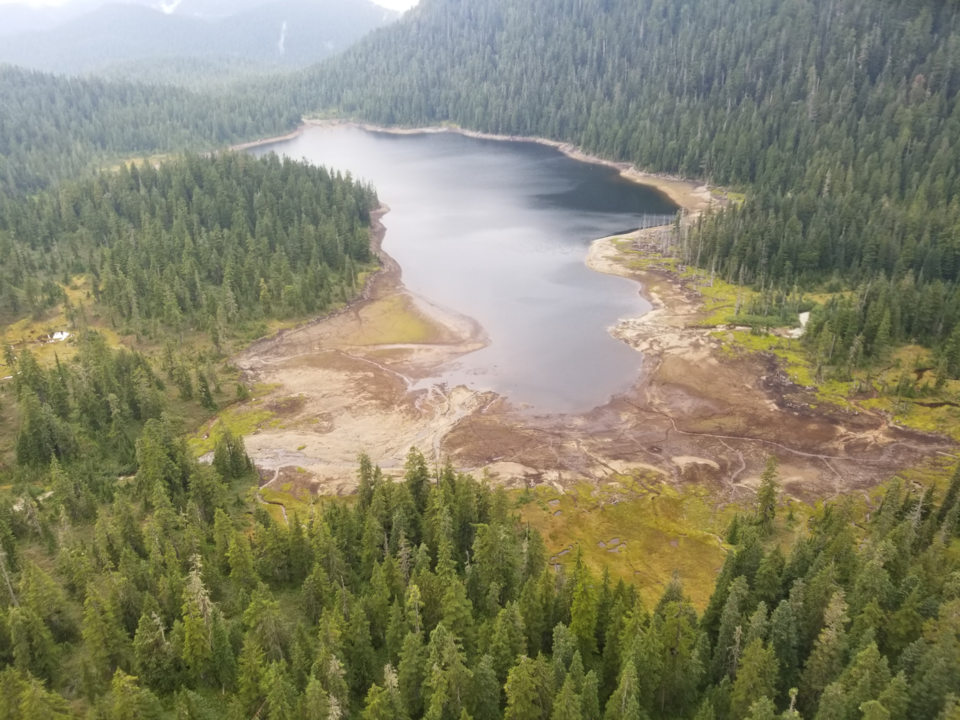Evidence of a continued “Team Sunshine Coast” focus by area local governments was demonstrated by the shíshálh Nation and the Sunshine Coast Regional District (SCRD) with securing long-term water supply reiterated as a shared interest in a Dec. 7 joint press release.
'Historic' MOU signed in July
Issued with that release was a memorandum of understanding (MOU) signed by the two parties on July 14. A product of “water summit” meetings hosted over the past year, that document lays the foundation for how the signatories will “work diligently to solve” the Coast’s ongoing water crisis. The MOU, which the release called “historic," builds on the parties' Joint Watershed Management Accord which was signed in 2011.
lhe hiwus yalxwemult (Chief Lenora Joe) stated in the release that, “The shíshálh Nation is proud to be carrying on the tradition of our ancestors as protectors of water and stewards of the land. We are excited to work alongside the SCRD on a joint goal of safe and sustainable water for everyone in the Nation’s swiya.”
The MOU’s term lasts to July 2024 but it has provisions for renewal, amendment and extension. It includes three “core shared water values” supported by the Nation and all other SCRD member jurisdictions.
SCRD board chair Leonard Lee, also quoted in the release said, “The first shared value identified in this agreement is one of collaboration, and through the water summit meetings held in 2023 we have agreed that we are stronger and can work faster together… We must strive to foster a sustainable future where water is used responsibly for the benefit of both present and future generations.”
The MOU includes a commitment to involve youth in its implementation. Resiliency and “a respect for nature” were also cited as core to the agreement, highlighting a need for sustainable growth on the Coast. A focus on finding “new ways” for effective local implementation of the United Nations Declaration on the Rights of Indigenous Peoples formed the third value pillar, which the document notes applies to both the shíshálh and Squamish Nations.
A shared water vision statement is also part of the MOU. Identified as a collaborative goal of that is fostering a “fundamental shift” in the way the Coast uses water and making the change in a responsible way. It states the signatories will advocate to do that through “education, innovation and collaboration."
MOU shows steps for Lower Crown reservoir project review
Part of the MOU’s stated purpose is to support the two local government’s joint application to the federal Disaster Mitigation and Adaptation Fund (DMAF). Submitted earlier in 2023, the application seeks grants of about $125 million. If awarded, those funds would help pay for raw water reservoir storage on the Nation’s lands to collect stream water during months when precipitation is plentiful. Those supplies would then be used during drier times in the SCRD’s Chapman water system, which supplies about 90 percent of the region’s water customers, including those in areas under the Nation’s jurisdiction. The application also seeks money for upgrades to the SCRD’s water treatment infrastructure that would be needed to safely process flows from that potential new supply.
The memorandum also lays out a range of negotiations that delegated staff will undertake to support the goal of stabilized area water supplies. They are to bring recommendations for their respective governing bodies to consider the DMAP project and other efforts related to sustaining the area water supplies. The delegates, chief administrative officer (CAO) Sean Maloney and advisor Jasmine Paul for the Nation and the SCRD’s CAO Dean McKinley, are authorized to set up technical teams and working groups for various aspects of that assignment. On Dec. 8, the SCRD stated in an email to Coast Reporter that those larger working groups had not started meeting.
The Nation’s technical and financial feasibility study for the development of the proposed Lower Crown raw water reservoir was provided to the SCRD late last month. At a special board meeting on Nov. 30, regional district elected officials reallocated $100,000 from within its 2023 budget for water-related project studies to support staff efforts to guide them through decisions related to that proposed project. During a presentation at that meeting, Nation delegate Paul highlighted that the MOU shows that strong local government partnerships exist on the Coast. She said that gives our area a “leg up” when it comes to securing senior government support and funding for projects to address critical water needs.



